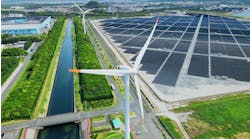Intelligent building technologies can be integrated into buildings to deliver any number of value-added benefits. One benefit that attracts many to purchase and implement these technologies is their abilities to identify, reduce, and control waste in power consumption. However, the same technologies also consume their fair share of electricity. If not properly addressed, this wastefulness can get out of hand.
Let’s look at five areas where smart building technologies are consuming unnecessary power and what owners can do to reduce this use.
1. Power down or hibernate tech when possible.
While many smart building technologies must be always powered on and operational, others can be scheduled to be turned off or placed into a power-saving hibernation. Examples of this latter technologies include Wi-Fi access points, desk phones, conference room reservation systems, and digital signage.
2. Shut off runaway apps and services.
A quick audit of the applications and services operating inside smart building data centers by IT administrators can typically uncover what’s known as “runaway” apps/services or software running on server hardware that’s providing no value to the building. Common examples include evaluation software that was never fully implemented into production; legacy building management software that was abandoned in favor of a more modern version; and applications that house potentially important data, but have not been properly stored and archived.
Shutting down these applications can not only save money on electricity to operate the orphaned software, but it also eliminates potential cybersecurity risks if the software isn’t regularly patched.
3. Turn off idle network hardware.
The in-building network is responsible for keeping all smart technologies connected to each other and to the outside world. As such, network hardware can be found in several areas of a building. One common practice in network design is to overdeploy network switches so that the network can scale upward to support more devices in the future. In many buildings and IT closets, however, that growth never occurs. As a result, many data centers and IT closets are filled with switches that are powered on—but connect nothing. Furthermore, these switches often come with high-wattage and fully redundant power supply systems. Identify and shut off idle network equipment to help realize significant power savings.
4. Upgrade power supplies and battery backup systems.
Upgrading smart building IT/OT infrastructure equipment to high-efficiency power supplies can be an investment that pays for itself many times over. Additionally, many critical building systems and applications require uninterruptable power supplies (UPSs) to ensure that these systems stay operational during outages. Too often, however, these UPS units are rarely upgraded to more modern and energy-efficient alternatives. A small investment to upgrade battery backup systems can go a long way to long-term power conservation.
5. Improve data center/IT closet cooling capabilities.
Cooling systems for infrastructure hardware consume more energy than anything else. To reduce the amount of electricity required to keep these smart building components within recommended temperature specs, take one of these two steps: First, identify applications that can be consolidated onto shared hardware. In most data centers today, applications operate inside virtual machine or containerized environments. Thus, consolidating multiple virtualized/containerized apps and services onto a single-server hardware platform can lead to the need for less hardware to be powered on. Of course, the less hardware operating, the less cooling is required.
Second, physically reposition servers and system racks into more efficient “hot and cold rows.” Doing so improves the extraction of hot air while allowing cool air to penetrate infrastructure hardware.
These are but a few examples of smart building technology power waste and how it can be curtailed. The takeaway, however, is that power conservation must cover all aspects of a smart building. If smart building technologies are intended to reduce overall power consumption, the technologies themselves should support the energy-saving mission.
For more news, projects, and profiles in the smart buildings ecosystem, subscribe to the SBT newsletter and follow us on LinkedIn, Twitter, and Facebook.



